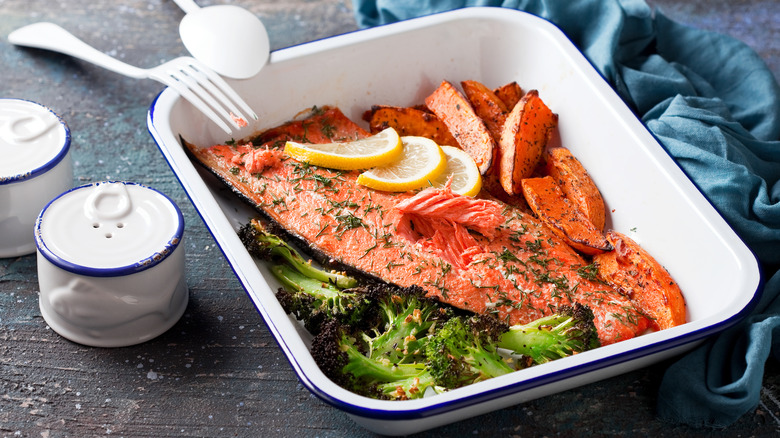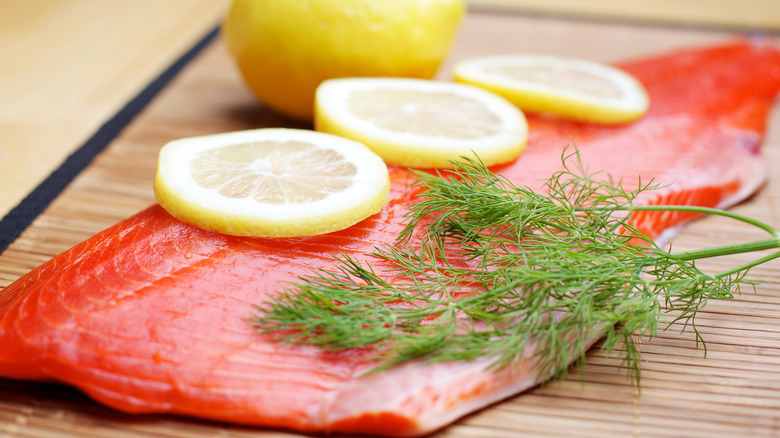The Reason Sockeye Salmon Needs To Be Cooked At A Lower Temperature
You just brought home a beautiful, brightly orange sockeye salmon filet, and you can't wait to cook it for dinner tonight. You bake it in the oven, like how you normally bake Atlantic salmon, at 400 degrees Fahrenheit for about 15 to 18 minutes. The sockeye salmon smells great coming out of the oven, but, unfortunately, it looks and tastes dry and tough. While the flavor is there, nutty and robust, the fish doesn't flake off smoothly with your fork, and the middle isn't translucent as perfectly cooked salmon should be. Disappointment sets in.
So, what went wrong? Well, for one, you've probably noticed how sockeye salmon appears leaner, with less fat marbling. Sockeye salmon has a lower fat content when compared to its fattier cousins like Ora King and farmed Atlantic salmon. Sockeye salmon filets are often thinner or thinly sliced. For these reasons, sockeye salmon cooks faster and can easily dry out; thus, you must cook it at a lower temperature.
Instead of 400 degrees, preheat the oven to about 375 degrees Fahrenheit. Then bake the sockeye salmon, skin-side down. Here's a good rule of thumb: bake for approximately 10 minutes per inch of thickness.
Avoid high heat when pan-frying sockeye salmon
Cooking sockeye salmon at a lower temperature applies when you pan-fry the salmon or cook it in ways other than baking. While you may want a quick sear over high heat, keeping the heat around medium-high at the start is best. Once the pan or skillet is hot, place the filet skin-side-down and sear it for about 30 seconds. Afterward, reduce the heat to medium and let the fish cook undisturbed for another 3 to 4 minutes before flipping it over. All the while, keep an eye on the fish.
If you see white bubbles or protein foam (albumin) form on the salmon's surface, this indicates the need to lower the cooking temperature to avoid overcooking the fish. If you have a cooking thermometer, check the internal temperature of the filet. The desired doneness for cooked salmon is medium-rare to medium, with an internal temperature of 120 degrees Fahrenheit. This is when salmon is buttery, soft, and flakey. However, please note that the USDA, for food safety reasons, recommends we cook salmon (along with all fish and seafood) until the internal temperature reaches 145 degrees Fahrenheit.
In any case, the next time you bring home sockeye salmon, remember that it needs to be cooked at a lower temperature so that the meat is buttery, flakey, and soft instead of coarse, dry, and tough.

